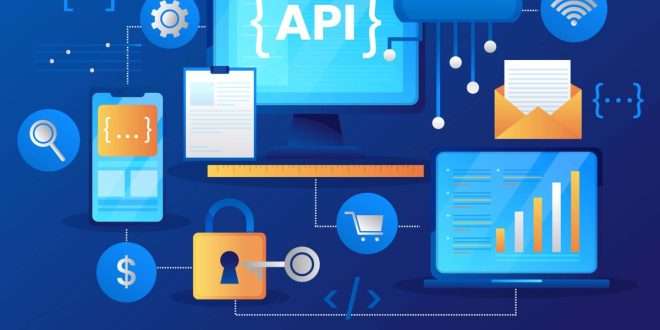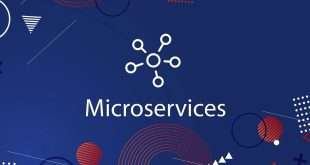Welcome to our comprehensive guide on the power of GraphQL and its role in creating efficient back-end APIs. If you’re a developer looking to optimize your backend web development or interested in learning back-end coding, you’re in the right place. In this blog, we’ll delve deep into what GraphQL is, how it works, and why it’s a game-changer for modern web development.
Understanding the Foundations of Backend Web Development
To fully grasp the significance of GraphQL, let’s begin by revisiting the foundations of backend web development. Traditionally, RESTful APIs have been the go-to approach for client-server communication. While they served their purpose well, they often lead to over-fetching or under-fetching of data, resulting in performance bottlenecks.
Unveiling GraphQL: A Revolutionary Alternative
In contrast, GraphQL, a query language for APIs, introduces a paradigm shift in how data is requested and delivered. Developed by Facebook, GraphQL allows clients to specify the exact data they need and nothing more. This declarative approach empowers developers to design APIs that cater to their application’s specific needs, significantly improving efficiency and reducing unnecessary data transfers.
Mastering the GraphQL Schema
At the core of GraphQL lies the schema, which defines the data structure and types available for query. This schema acts as a contract between the client and server, ensuring clear communication and predictable responses. Embracing GraphQL’s schema-first development approach enhances collaboration between front-end and back-end teams and streamlines the development process.
Navigating GraphQL Queries and Mutations
GraphQL queries enable clients to fetch data, while mutations facilitate data modifications. Unlike REST, where each endpoint serves a specific purpose, GraphQL combines both query and mutation capabilities within a single endpoint. This simplicity not only simplifies API maintenance but also reduces network overhead.
Optimizing Efficiency with GraphQL Fragments
To further optimize your GraphQL queries, you can utilize fragments, reusable units of fields that allow you to compose complex queries and mutations efficiently. By leveraging fragments, you can keep your codebase clean, enhance maintainability, and reduce the risk of errors.
Leveraging GraphQL for Real-time Data
Another compelling advantage of GraphQL is its ability to handle real-time data through subscriptions. Subscriptions enable clients to receive real-time updates whenever specific data changes on the server. This feature is invaluable for building interactive applications and live feeds.
Overcoming Over-fetching and Under-fetching Woes
GraphQL’s ability to fetch only the required data eliminates the problem of over-fetching and under-fetching, making it a suitable choice for resource-constrained environments, such as mobile applications.
Understanding the Ecosystem: Tools and Libraries
The GraphQL ecosystem is rich with tools and libraries that simplify its implementation. From Apollo and Relay on the client-side to Express GraphQL and Graphene on the server-side, developers have a plethora of options to choose from based on their specific project needs.
Addressing Security Concerns with GraphQL
As with any API, security is a critical aspect. While GraphQL itself is secure by design, developers must still implement best practices to protect against common vulnerabilities like data exposure and injection attacks.
Common Challenges in GraphQL Adoption
Despite its numerous benefits, GraphQL adoption comes with its share of challenges. Learning curve, schema design complexity, and server performance optimization are some common hurdles that developers may face. However, with proper understanding and experience, these challenges can be effectively overcome.
Final Words
In conclusion, GraphQL stands as a powerful solution for creating efficient back-end APIs. Its ability to deliver precisely the required data, real-time capabilities, and ecosystem support make it an excellent choice for modern web development. By adopting GraphQL, developers can elevate their back-end coding skills and build high-performing, flexible applications that meet the demands of today’s dynamic digital landscape.
Commonly Asked Questions
Q1: Is GraphQL only suitable for specific types of applications?
A: No, GraphQL is versatile and can be used for various types of applications, including web and mobile applications.
Q2: How does GraphQL compare to RESTful APIs in terms of performance?
A: GraphQL outperforms RESTful APIs by reducing over-fetching and under-fetching of data, resulting in faster and more efficient communication between clients and servers.
Q3: Can GraphQL be used with existing databases and systems?
A: Yes, GraphQL can be integrated with existing databases and systems, making it a flexible solution for both new and legacy projects.
Q4: Does adopting GraphQL require significant changes to the front-end codebase?
A: While some adjustments might be necessary, the benefits of GraphQL, such as reduced network requests, often outweigh the changes required in the front-end.
Q5: Is it possible to migrate from REST to GraphQL gradually?
A: Yes, you can adopt GraphQL incrementally by implementing it alongside your existing RESTful APIs until you fully transition to a GraphQL-centric approach.
 webfily
webfily



